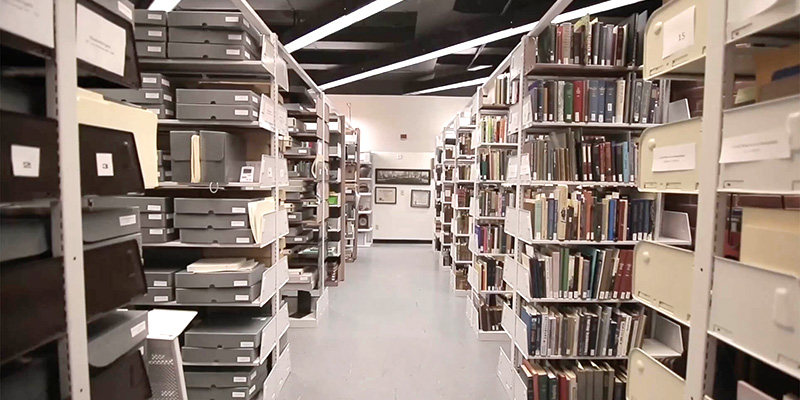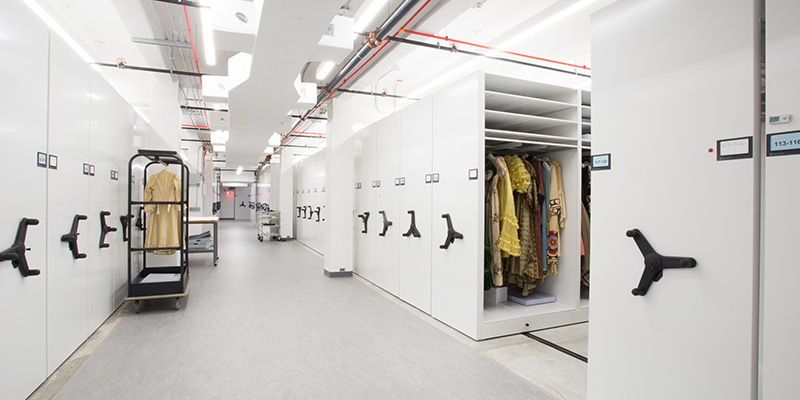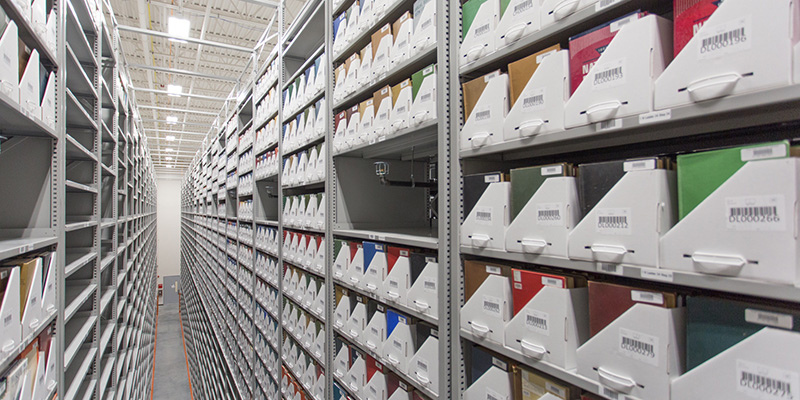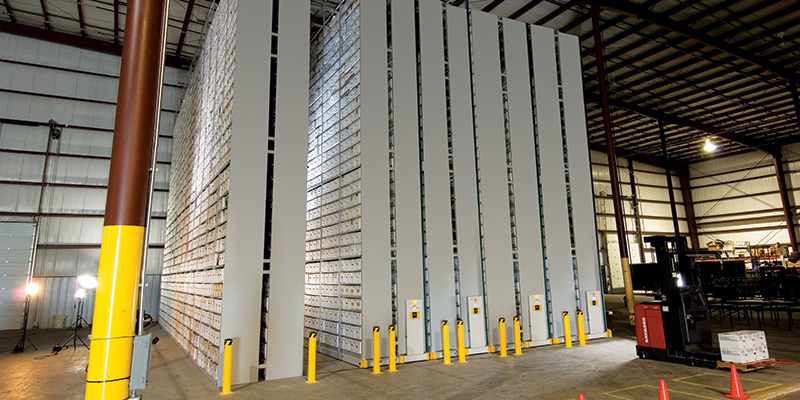When you think about a shelving storage system, you likely think of static shelves to store your stuff. Maybe you envision a library with shelves of books set equidistant in long parallel rows. Or retailers with tall shelves of many different sized SKUs filling the back of the store. But there are so many more options. Install the perfect system for your business with this guide to shelving storage system basics.

Shelving Storage System Types
To begin, it’s important to recognize that while static shelving still exists, you can also get great benefits from a high-density mobile shelving system. You might also think about combining these two main types of shelving in one system for the most efficient and effective use of your space.
Spacesaver’s commercial-grade compact static shelving systems are installed worldwide in offices, libraries, museums, factories, police stations and other institutions. Look around and you’re likely to see:
- Heavy-duty steel 4-post static shelving that’s fully customizable and built to last
- Case-type shelving that can be easily reconfigured as needs change
- Cantilever shelving common in public, academic, law, medical and corporate libraries
- Flexible high bay shelving which offers space efficiency, economy, accessibility, and safety for stored materials
- Heavy and oversized items stored on wide-span shelving
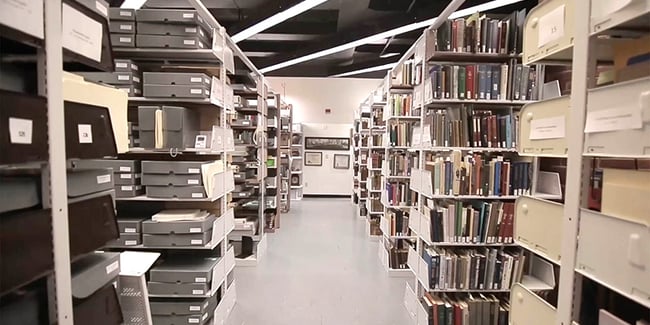
Then, there are the high-density mobile shelving systems. These offer the advantage of space savings. Eliminating unnecessary aisles by creating one or more movable aisles, this mobile shelving can save up to 50% of your floor space. Users can select from several types of movable shelving:
- Electrical-powered mobile shelving systems
- Mechanical-assist mobile shelving
- Manual-assist mobile shelving
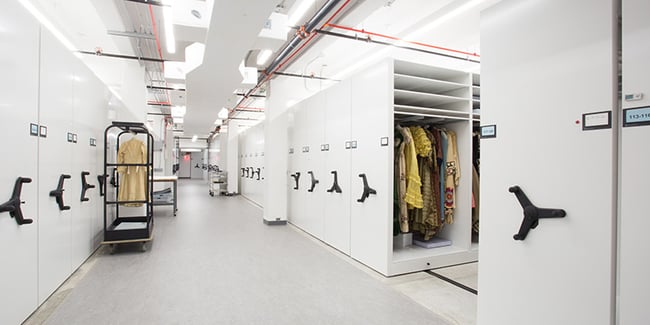
Plus, as suggested already, you might also consider both types of storage in one installation. That’s what Georgia State University in Atlanta did. For its law library renovations, GSU included nine powered systems located on two different floors along with four different areas of static shelving. That’s more than six miles of shelving spanning a footprint of over 4,500 square feet.
The Process for Putting Shelving in Place
Selecting the right shelving storage system starts with acknowledging the problems with your existing shelving. Or, as we like to think of it, identifying the opportunities.
You may survey your environment and see crowded shelving in a cramped space. It’s difficult to find what you’re looking for or maybe only one person on your team actually understands the “logic” of how things are organized. You may also be confronted with old and dilapidated storage that has been in use since the 1990s. All this doesn’t make you and your people that excited to come into work.
A shelving storage system expert can come in and help you to reimagine your space. Drawing on a deep knowledge of static and mobile shelving applications across industries, they can offer input to help you optimize storage capacity, increase access and efficiency, improve work conditions and give your space a fresh look and feel.

The good news? You don’t have to settle for a cookie-cutter solution that looks like everyone else’s. There are many features available to choose from to make the shelving solution your own. Along with deciding between mobile and static shelving (or a combination of both), you can also customize your installation to best suit your needs.
At the College of Charleston (CofC), Claire Fund, Director of Administrative Services for the Addlestone Library, decided to upcycle non-compact, static shelving. The CoC was able to dismantle and reuse its shelving, first purchased in 2004, in a new high-density mobile shelving system.

Explore Custom Features for Your Needs
Of course, you’ll also need to identify your budget. When choosing your best option, know that there are several factors that will also play a role in pricing your project:
- System size
- Type of drive (if mobile)
- System quality/durability
- What you’ll be storing
- How you want it to look
- Where it will be installed
If you take the mobile route, you’ll also want to learn more about the various safety features. Do a needs analysis to decide which sweeps and sensors, anti-tip protection and aisle lighting you might want. The Zero-Force Sensor (ZFS)® is a completely passive method of protecting people and objects that prevents the system from moving when someone or something is in an open aisle. On the other hand, with an aisle-entry sensor a photoelectric beam crossing each aisle prevents the system from moving if the beam is broken.
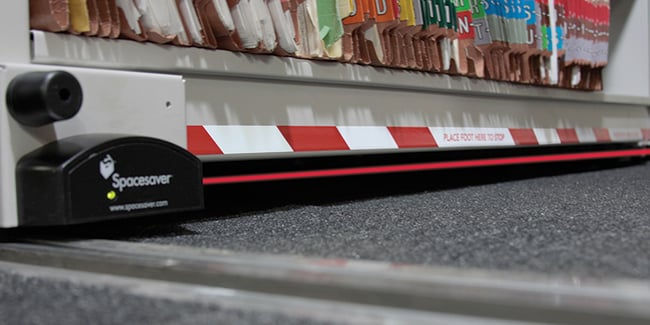
You’ll also get to choose from a range of accessories and system finishes, materials and colors. You might want to add file drawers, bins, file dividers, pull out reference shelves, receding doors or make other custom choices to specifically meet your workplace needs.
As for design, you can create a designer appearance by selecting from a variety of laminates, wood veneers and metal finishes. You could even brand your shelving storage as Wake Forest did in its athletic facilities.
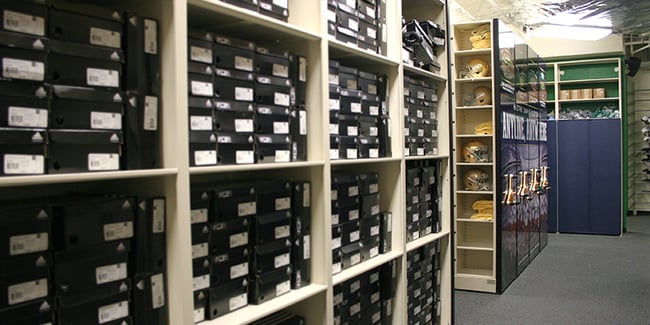
Helpful Tips for Your Projects Deliberations
In deciding on the best shelving system for your space, consider the environment at all angles. You may be able to take advantage of tall ceilings with high bay units (either static or mobile).
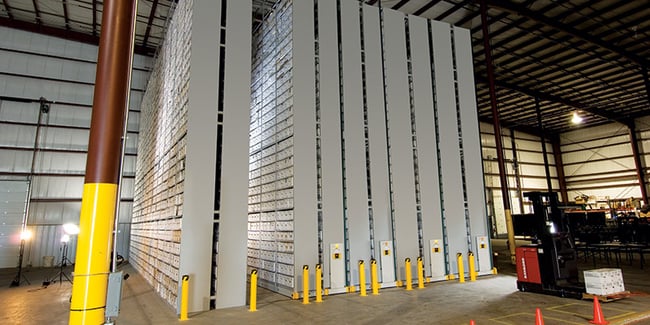
What you do in your space will also matter. If you’re in a healthcare environment, you might want to go with a stainless steel or High-Density Poly-Ethylene (HDPE) finish. Meanwhile, a lab where people are handling corrosive chemicals might prefer a chemical-resistant laminate material. A gallery with overhead space could benefit from a mobile art rack system.
It’s safe to say there are many more types of shelving storage systems than you might imagine. Plus, there are all kinds of accessories, colors, materials, safety features, and configurations to consider.
Meet with a Patterson Pope storage specialist at any point in your process. We can discuss your space needs in-depth and help you anticipate specific requirements related to your location and business needs. We can also provide a vision for your space, a general guide for pricing and more. Contact your storage specialist today!


